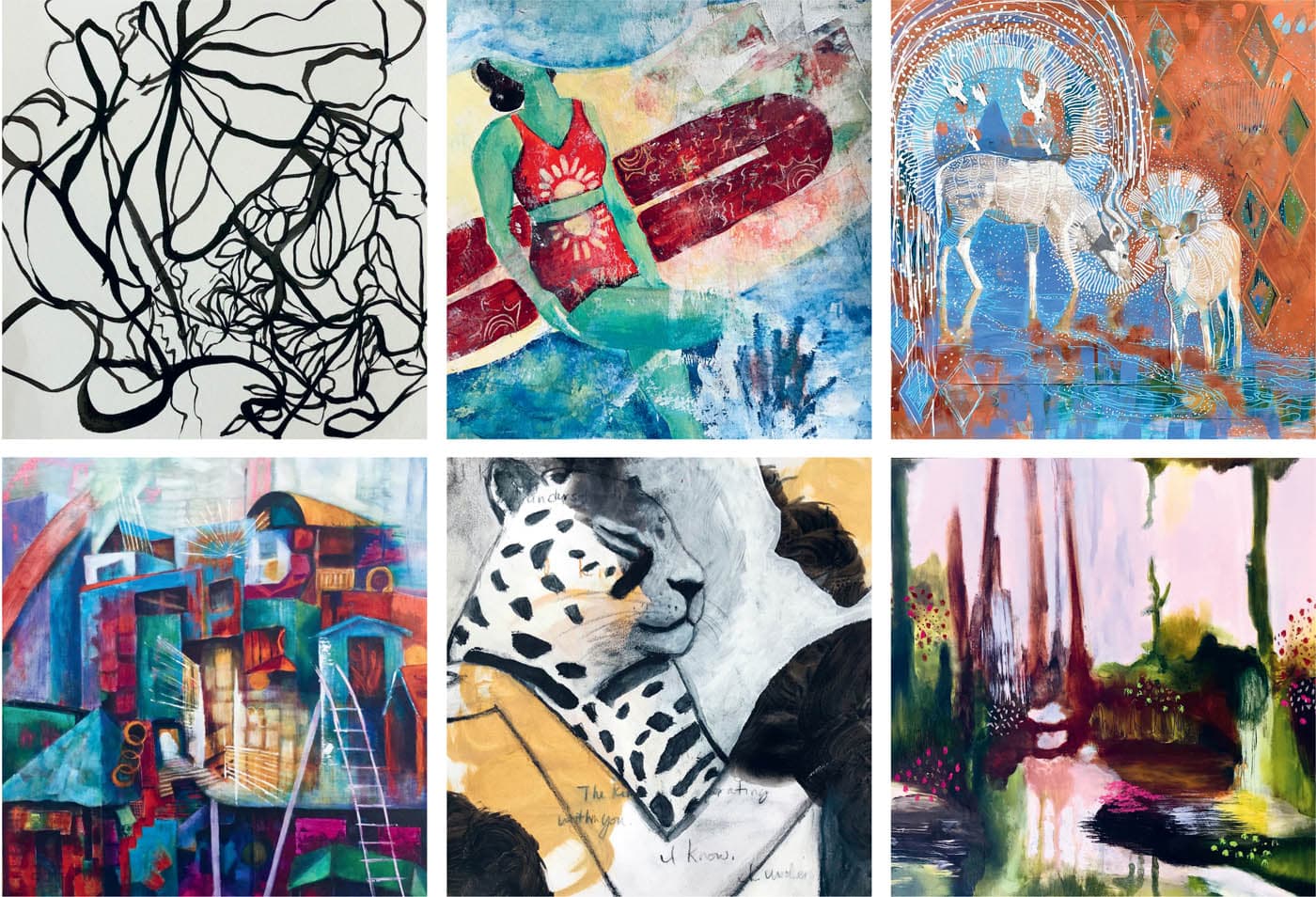4
GATHERING INSPIRATION FROM YOUR EXTERNAL LANDSCAPE

IN THE LAST CHAPTER, we invited you to soulfully explore your internal landscape as a way to remember where you’ve come from, what has always been true for you, and what is stirring in your heart and imagination right now.
This chapter invites you to turn your lens of noticing outward as you find unique ways to synthesize the world around you.
While it’s easy to breeze through our busy days without noticing much at all, we hope this chapter reminds you of the infinite sources of inspiration just waiting to be touched, seen, and experienced when we simply choose to tune in.
Can you remember a time when you slowed down long enough to drink in the softly shifting colors of a sunset or listened to the intricate soundscape of a favorite song, or felt the weight of the air on your skin? If so, you understand the depth of aliveness that’s possible inside of every moment.
Creatively synthesizing this information is what this chapter is all about.

There are so many ways to gather inspiration from the world around you, and we’re happy to share some of our favorite, most effective approaches with you here. We think of this as filling our basket of inspiration, and it’s a process that thankfully never ends. We find great joy in this journey and believe it’s our job as artists to consciously slow down, notice, and collect inspiration from our daily experiences—a practice artists have been participating in for hundreds of years. As you explore the different exercises in this chapter, the most important thing is to stay connected to what feels most genuinely interesting to you. Your unique preferences are what set you apart from everyone else, and we’re here to help you take that information and translate it into your creative expression. It’s also important to consistently collect ideas from many different sources. From there, there are countless ways to weave what you’ve collected into something that’s all your own. Okay, let’s start gathering!INSPIRATION GATHERING

Artists often carry sketchbooks to gather inspiration and record the world around them, and we believe this practice is a powerful way to support the development of a personal style. Even if you don’t fancy yourself a skilled drawer, the very act of noticing what catches your eye and taking the time to translate what you see in your own unique way connects you to your personal sensibilities and preferences. In this way, drawing can be used as a way to archive inspiration from your day-to-day life for future reference. If you want to skip the sketchbook, you can also draw from life straight onto your watercolor papers. Below, you’ll find some simple drawing practices to get you going, but it’s important to stay open to the magic of the moment and what feels inspiring along the way. Embrace what comes naturally and what feels easy. Let go of perfection and remember your way is the right way. Play with different drawing tools and do many quick sketches without the need for them to be “right,” “pretty,” or “usable.” Most importantly, have fun with it. Drawing with your nondominant hand is a great way to explore a looser, freer, and potentially more you way of creating. Letting your less practiced hand take the lead might feel awkward at first, but this is part of what’s so exciting about this way of drawing. By releasing control and your habitual ways of creating, you’ll instantly discover fresh energy in your lines and shapes. Start by drawing something simple like a leaf, an item in your home, or an abstract shape and work your way towards more complex compositions as your nondominant hand gets a little practice. Play with drawing fast and then slowing it way down. Explore going big and letting the lines go off the edges of your paper and then switch to smaller, more detailed work. Extra Challenge: Try drawing with both your dominant and nondominant hand at the same time. Blind contour drawing is another wonderful way of letting go of perfectionism and embracing the funky and spontaneous lines that emerge naturally when you stop looking back and forth between your paper and your subject matter. Start by deciding what you’d like to draw, such as a flower, a friend’s portrait, or a scene out your window. Without looking at your paper at all, draw your subject with one continuous line, allowing your pen to flow freely across the page. Release the need for this drawing to look “right” and embrace the freedom of whatever wants to emerge. Extra Challenge: Try using your nondominant hand and blind contour at the same time. Drawing shadows is a simple and easy way to capture unique shapes and images with a little help from the sun. Head outside and start to see where the light and shadows meet. Notice what shadow shapes feel interesting to you and place your sketchbook or your paintings in the path of these shadows so they fall directly onto your page. Trace these shapes or parts of them and see what interesting designs you might capture. Feel free to overlap your shadows. Extra Challenge: Seek out shadows that are in motion.DRAWING EXERCISES: Nondominant Hand, Blind Contour, and Shadow Drawings
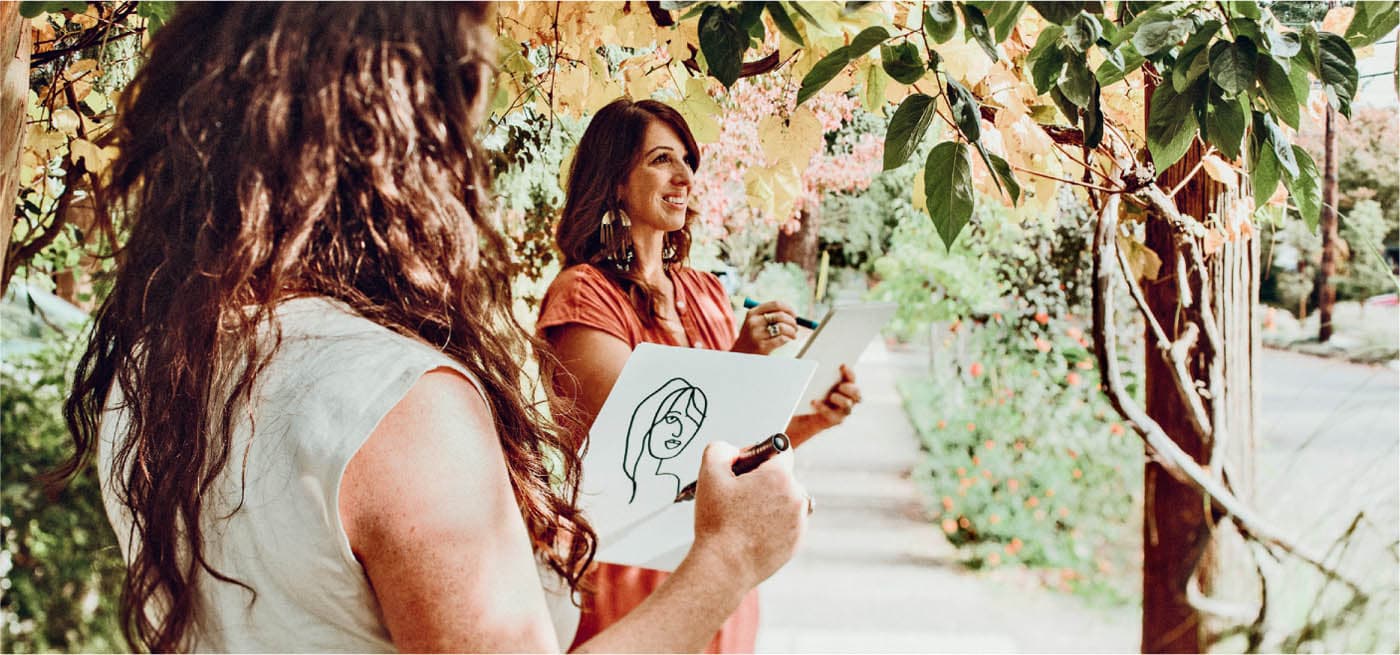
EXERCISE 1:
Nondominant Hand

EXERCISE 2:
Blind Contour

EXERCISE 3:
Shadow Drawings
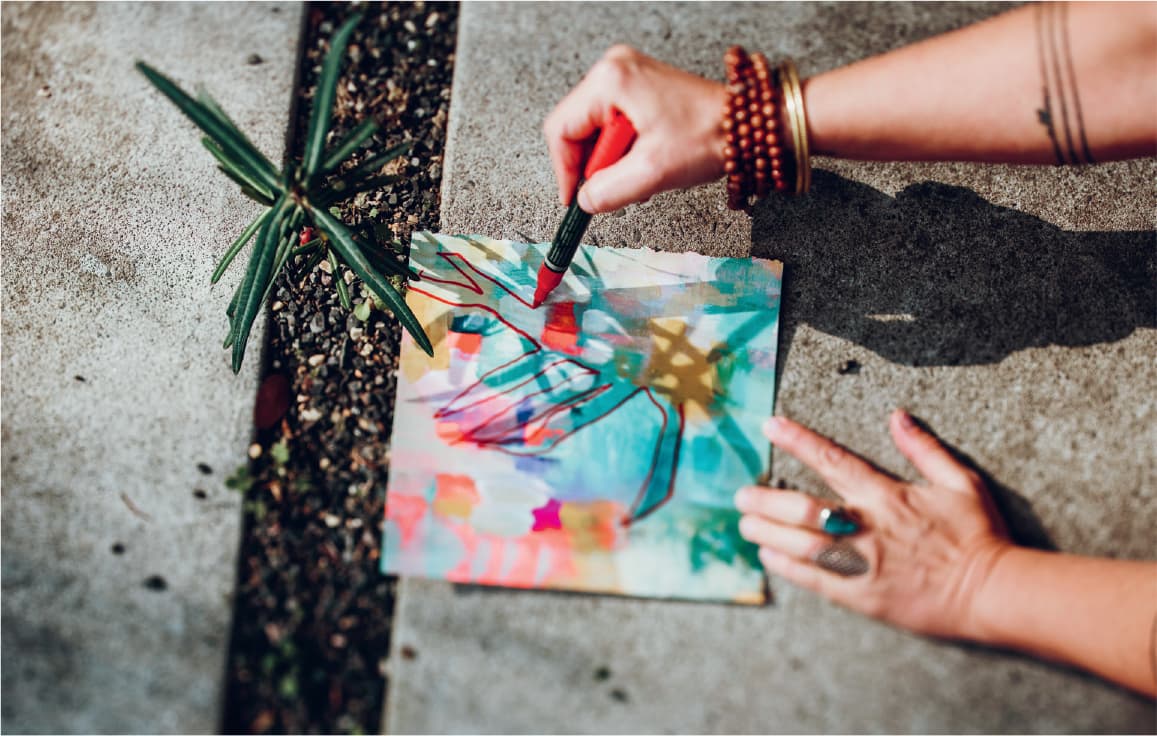
If you ever start to feel overwhelmed or uninspired by all the information in the world around you, we’ve put together three scavenger hunts to get your inspiration-gathering wheels turning. Using the prompts below, grab your sketchbook (or a stack of your new or in-progress paintings), along with your favorite drawing tools and head out on a drawing scavenger hunt. Feel free to incorporate your nondominant hand or blind contour explorations as well. Using the prompts below, grab your camera and head out on a photo scavenger hunt. Reference your favorite photos later on when you’re working on your paintings. Using the prompts below, head out on an object scavenger hunt to collect the following objects. Keep these items and reference them when you’re working on your paintings.THREE SCAVENGER HUNTS: Drawing, Photo, and Object
Drawing Scavenger Hunt

Photo Scavenger Hunt

Object Scavenger Hunt
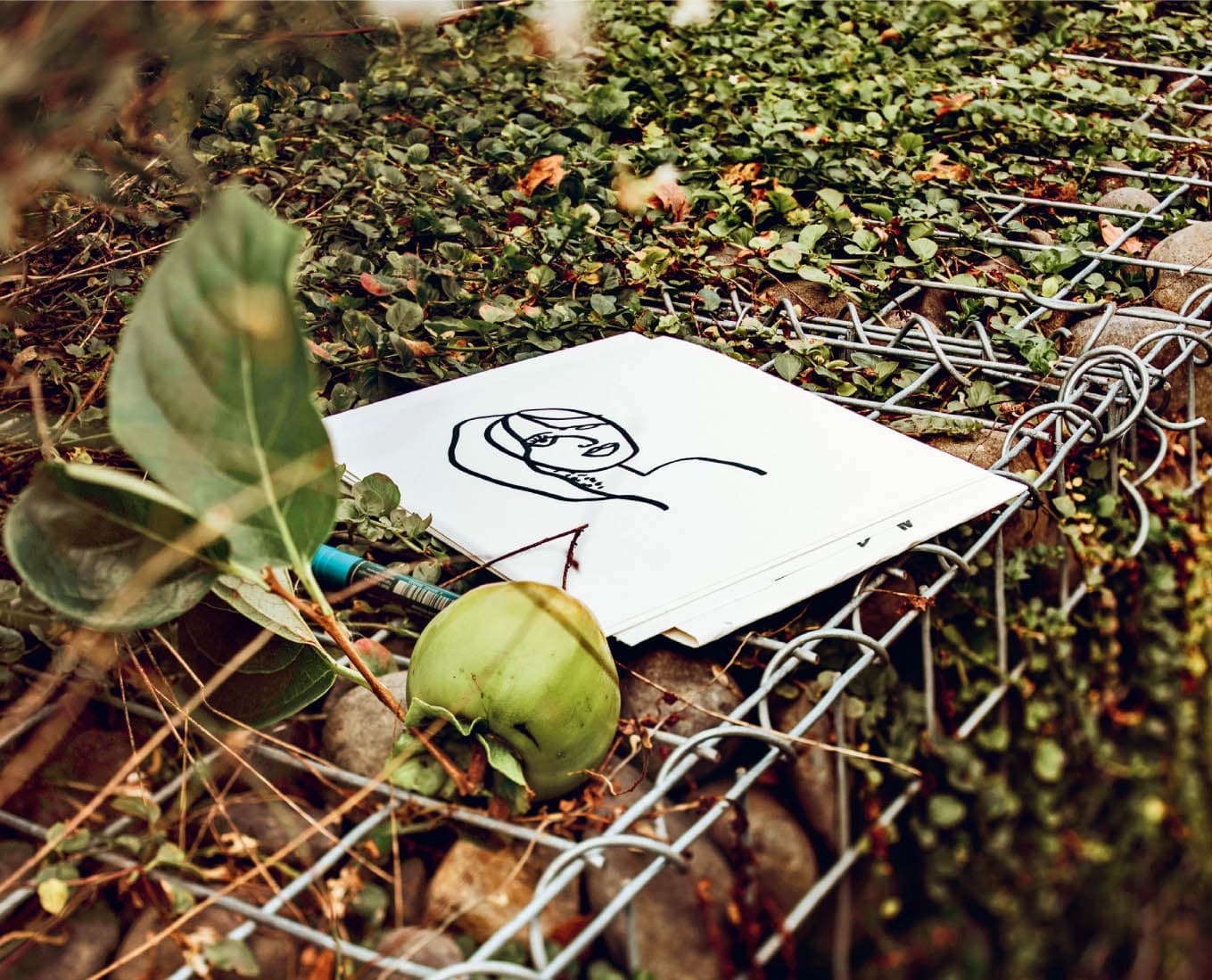

The practice of tuning into our senses provides an immediate and powerful way to drop into the present moment where creativity and possibility are alive and well. Below, you’ll find a series of prompts intended to connect you to your senses more deeply and connect you to the world around you in more meaningful ways. We find the results of these practices to be so life-giving. As you practice tuning more deeply into your senses, consider how the information you receive from your sight, sound, touch, smell, and taste might make its way into your visual language and artistic expression. How could your most inspired senses become a jumping-off point for your next group of studies? This is a great time to think outside the box and get creative!SENSING THE WORLD AROUND YOU
Now that you’ve started to tune into the world around you as a source of inspiration, take a few minutes to dive even deeper into your personal archives of preferences, desires, and life-long loves by responding to these writing prompts. When I look around my house now, it’s clear that ________________________ . When I walk down the street, what I usually notice is _____________________ . The music I love is _____________________ . I collect _____________________ . I love to travel to __________________ . (Or, I want to travel to __________________ .) I find inspiration in _____________________ . People who really know me, know that ______________________________________ . My favorite colors are _____________________ . My art style could be described as _______________ . (Or, I wish my art style was more ______________ .)WRITING INQUIRY: Your Inspiring Life

In this chapter, we gathered inspiration from the world around us through drawing practices, scavenger hunts, opening up our senses, writing about our life, and improvising with some of our favorite shapes. Now, it’s your time to integrate and create. Remember, there’s no right or wrong way to move forward. As always, you can start new paintings or add layers to works-in-progress. We suggest starting with whatever painting is calling to you and seeing where that leads you. You only need to have the next idea, so don’t get ahead of yourself. One small move leads to the next, and it’s impossible to know where it’s all going. Stay present and enjoy the ride. If you’re feeling unsure about how to begin, here are a few prompts to get you going:INTEGRATE AND CREATE

Jumping-Off Points
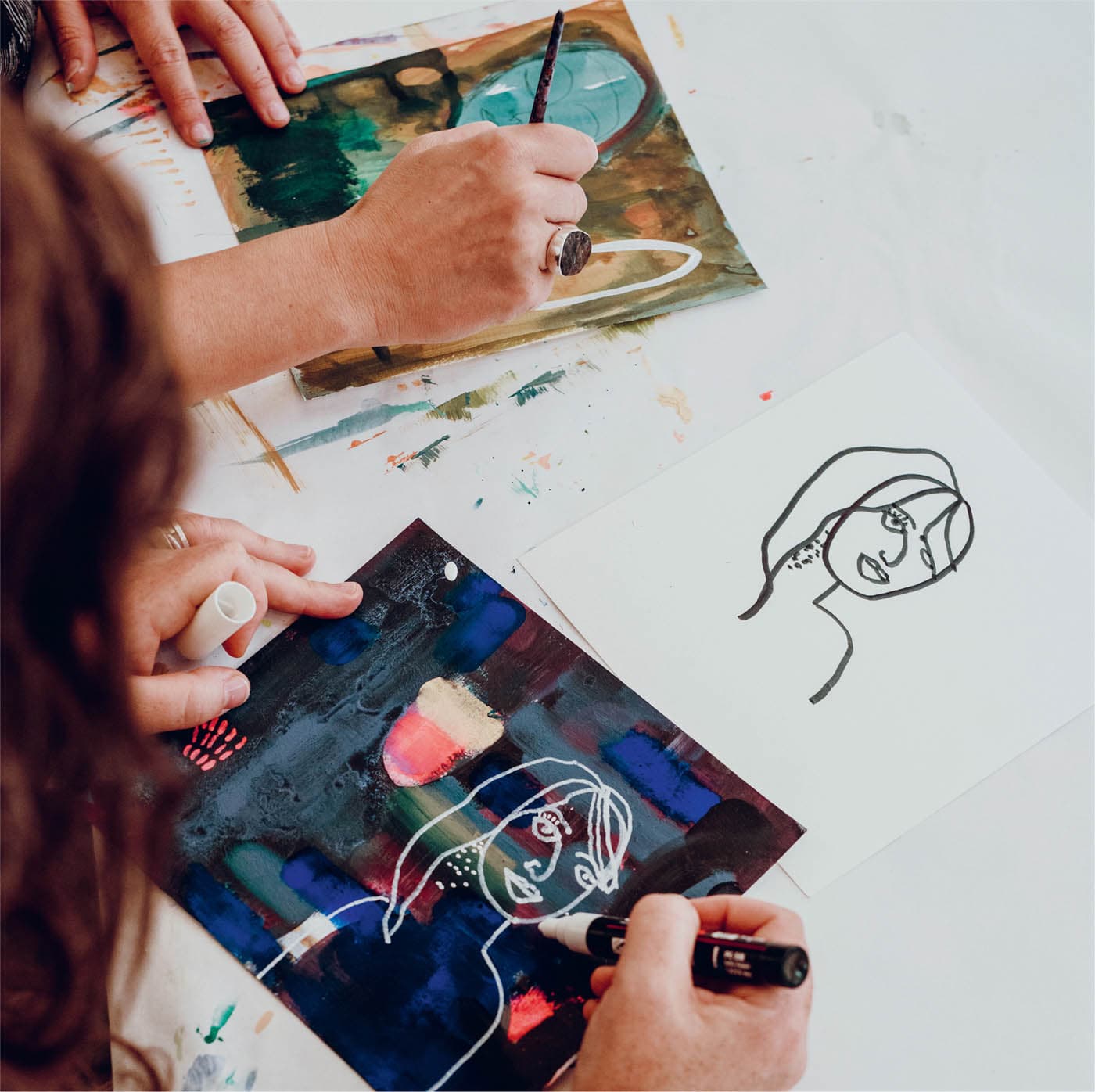

This is a sampling of paintings completed by Fresh Paint E-Course participants.
TOP ROW, FROM LEFT: BOTTOM ROW, FROM LEFT:STUDENT GALLERY
Gathering Inspiration from Your External Landscape
